AN EXCLUSIVE INTERVIEW WITH ALEXANDER CHARRIOL
BY LEILA ANTAKLY – Center Places –
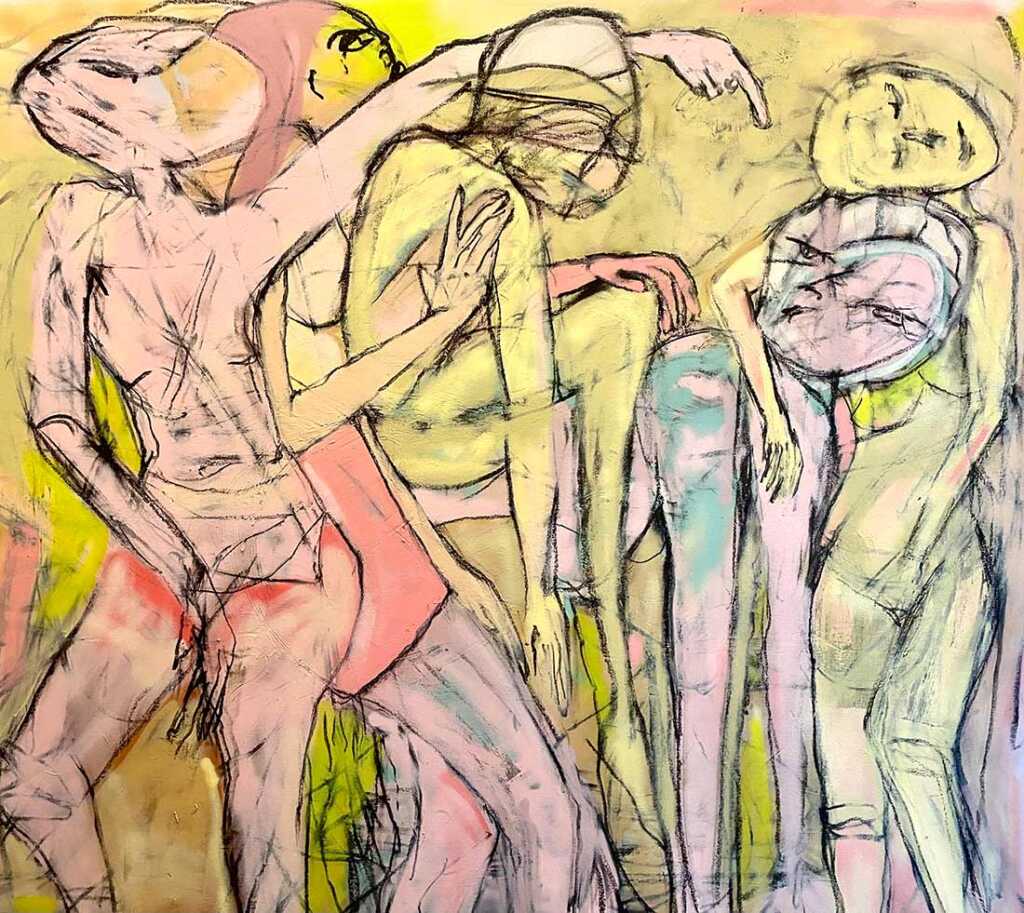
62 x 66.5 inches.
Alexander Charriol © All rights reserved.
Alexander Charriol (b.1979) is an artist who explores human connection, intimacy, energy, and society in the form of abstract expressionism. I met the artist many years back when we both lived in New York City and have seen a development in personal reflection, technique, and creative expression.
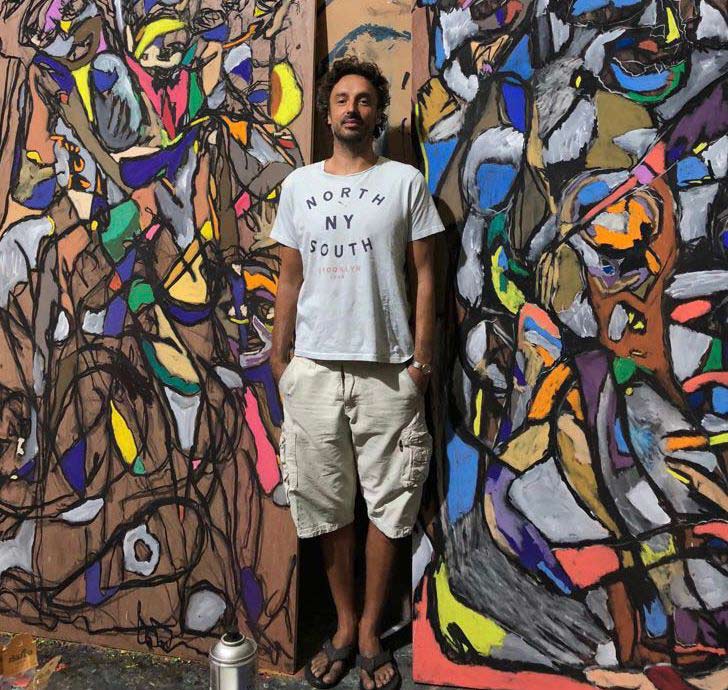
Born in Honolulu, Hawaii, to French parents and raised on three continents, Alexander is multicultural, straddling the America-Europe-Asia axis since birth. We similarly share this characteristic of adapting very easily to new cultures and thirst for human connection, his latest work, as we later discover in my interview, stems from this need and curiosity. Alexander discovered painting in high school while in detention, probably for exhibiting unruly behavior. Still, quickly his creative accomplishments led to a solo exhibition at the Sydney Museum in London in 1995. He continued formal art training at college at the Museum of Fine Arts in Boston and later Parsons’ School of Design in New York while simultaneously joining his family business, Charriol. His work has since been exhibited and collected by galleries and museums worldwide, including LHTM Gallery in New York, Ayala Museum in the Philippines, Lotus Gallery in Bangkok, Kiptonart Gallery, and Artspace in Dubai. It was over lockdown when Alexander decided to focus full time on art and self-introspection, bringing ten figurative abstract paintings to life. These works comprise his most recent exhibition titled ” Center Places” in Los Angeles, California, where he lives and works.
Alex Charriol continually challenges himself in the face of the unknown.
His paintings all start with ‘automatic drawing,’ coming from his raw emotions. His work dissects surface interactions between groups of people, hoping to transmit underlying personal struggles to us. He raises the question of where we fit in this world. Charriol uses his energy to embody the human experience through a sense of struggle and pain. Despite a sense of darkness, he reveals the vulnerability and romance that all humans are capable of. The figures in “Center places” all express a sense of distress, loneliness and all seem to be searching for love and acceptance.
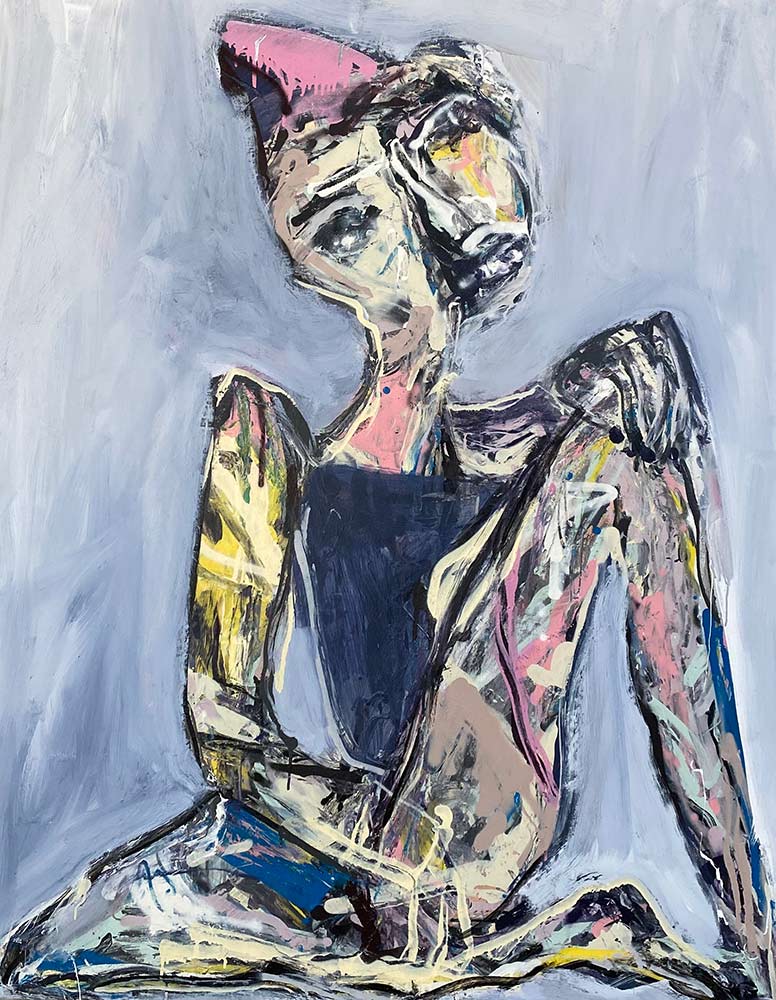
Spray Paint Acrylic Paint Charcoal On Canvas.
52 x 42 inches.
Alexander Charriol © All rights reserved.
Leila Antakly: Alex, how would you describe your visual style?
Alexander Charriol: My visual style has stayed the same over the years, and it stems from powerful colors, bold and raw shapes, and figures that create an abstract narrative form. I don’t paint in the traditional style; there is always an interaction happening. The root of the ideas comes from these pictorial storyboards that I create in my mind. Once I get the ideas onto the canvas, I begin to layer and get more intimate with how I express those ideas.
I have become more loose and free-flowing over the years, and in fact, I feel freer as an artist now.
I want to expose emotional conflicts, challenge contemporary belief systems, and investigate hidden vulnerability through a sophisticated road map of the body.
Leila Antakly: How did you choose or decide to become an artist?
Alexander Charriol: As a child, I suffered from dyslexia. It made me quite erratic in school, and one day I got in trouble for something and was sent to detention. It was there while at detention I took a paintbrush, and I did exactly what I wanted. It was the first time I ever got any praise. It felt good, and it was at that moment I knew exactly that I had found myself and what I wanted to do with the rest of my life.
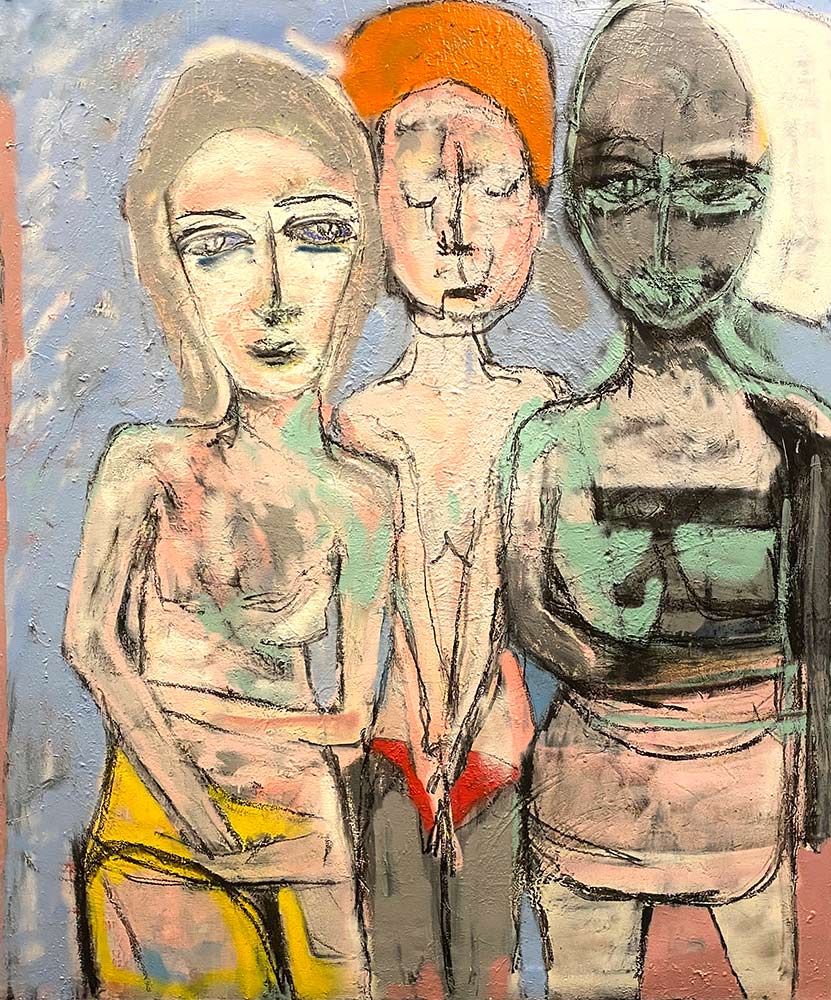
Acrylic paint, spray paint, and charcoal.
28 x 23 inches.
Alexander Charriol © All rights reserved.
Leila Antakly: What about your greatest inspirations?
Alexander Charriol: Well, inspiration is a funny word. I get my inspiration in small doses, and as an artist, I have to grab them while they’re there. I think many artists learn to be in tune with their body, and for me personally, inspiration penetrates all of my creativity, and I just go with it. Sometimes it can build up slowly, and other times I experience ‘out of body painting,’ and when I look back, I realize that my inspiration took completely over and led the whole artistic process. It can get very intense and emotional.
Leila Antakly: How do you feel about your development over the years? What about the development during the global pandemic and lockdowns?
Alexander Charriol: I’d say, when I was younger, I was on a bit of a high horse, and over the years, I’ve become more humble as a person and artist. The older you get, the easier it becomes to accept yourself with all one’s flaws and imperfections. The pandemic, for me, in a sense, finally gave me the freedom to focus on art 100% of my time.
I no longer had other priorities, work obligations, and personal distractions keeping me away from the studio. I felt like finally, I was face to face with a mirror, completely on my own, facing all my fears, uncertainties, and angst, and I just had the time to create. It was a full-on explosive experience resulting in this new series of work called ‘Center Places.’
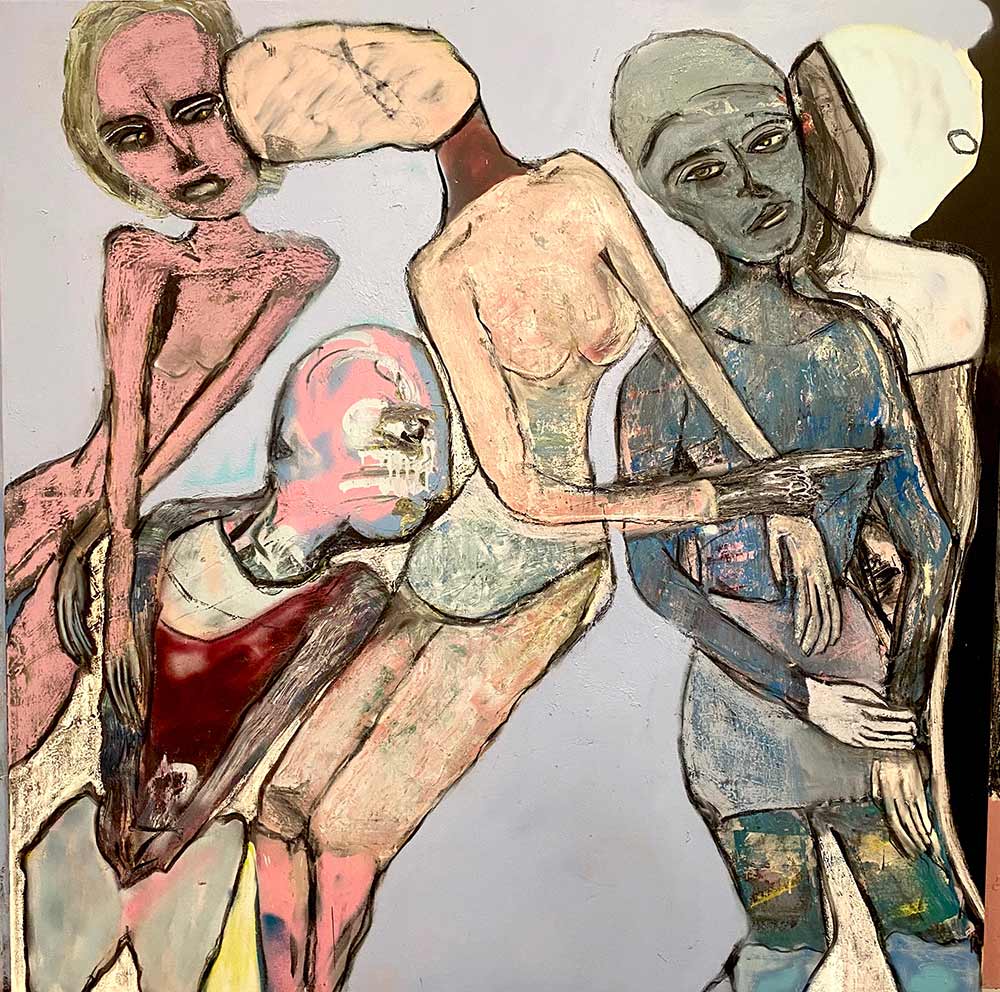
Acrylic paint spray paint Pastel charcoal on canvas.
60 x 60 inches.
Alexander Charriol © All rights reserved.
Leila Antakly: Tell us more about your latest series, ‘Center Places.’
Alexander Charriol: This series of work began with a shift of materials. I got tired of always working with pastels and decided to use spray paint in a similar manner, experimenting, learning how to layer and subtract paint from it.
The results were deep textures, and because I am color blind, the spray paint and pastels would mix and generate their own colors rather than me having to manipulate my own mix. As a result, the artworks are characterized by their intense, expressive subjectivity and a return to large-scale narrative imagery.
In terms of subject matter, ‘Center Places’ is a continuation of Human Flow. What differs is that the subjects are more layered, have a stronger self in them, and reflect German Expressionist energy. Human Flow was about connecting; this time, it’s a more individual search within a group of people. Finding one’s own energy and where you fit in the spectrum of human flow. I’m aiming to go beyond and show some layered and complex textures in these works.
Leila Antakly: How does this theme tie into your life, personally, in a more in-depth aspect?
Alexander Charriol: Towards the end of the lockdown, while I was creating these works, there was a realization and acceptance to where I am now. Our lives are changing so quickly; I lost my father, shifted priorities, and felt alone and misunderstood. I’ve been on a journey exploring intimacy and connectedness. Paintings such as Jockey Meeting, Space for Two, and Hard People may portray characters fondling their own and each other’s private parts. Still, the transmitted mood is not supposed to be erotic, suggestive rather than seeking comfort and emotional safety. Pink Love and Angel of the Missionary are also artworks where I strongly encourage people to be honest with themselves and allow them to feel or explore their own vulnerabilities.
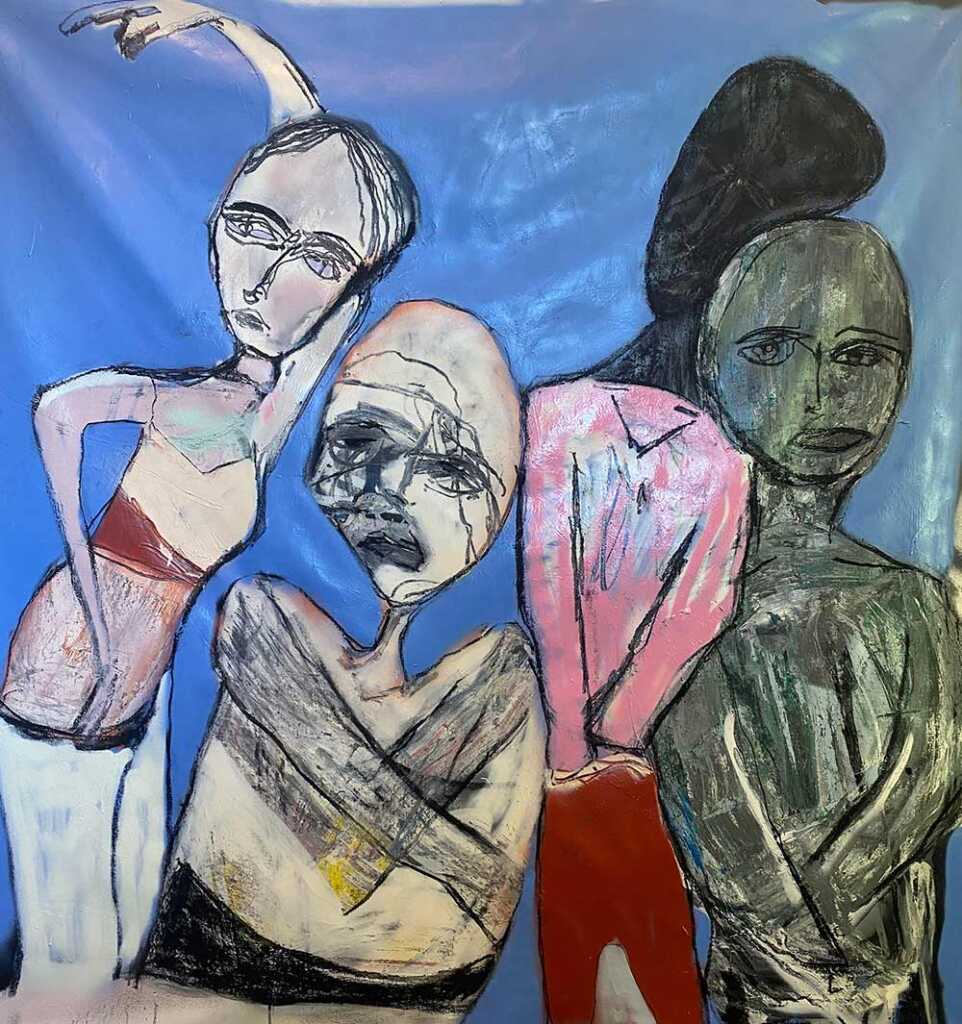
Acrylic paint and spray paint charcoal and Pastel on canvas.
60 x 60 inches.
Alexander Charriol © All rights reserved.
Leila Antakly: What’s next for you? Any new projects in mind?
Alexander Charriol: I definitely see myself addressing climate change and experimenting with new materials like clay, polyurethane resin, molding paste, epoxy, moss, and Papier maché. I’m always looking for ways to give my paintings even more life; in fact, it’s really a compulsion or an obsession.

